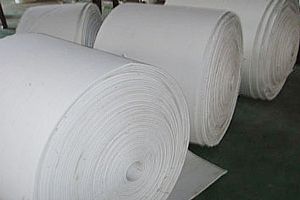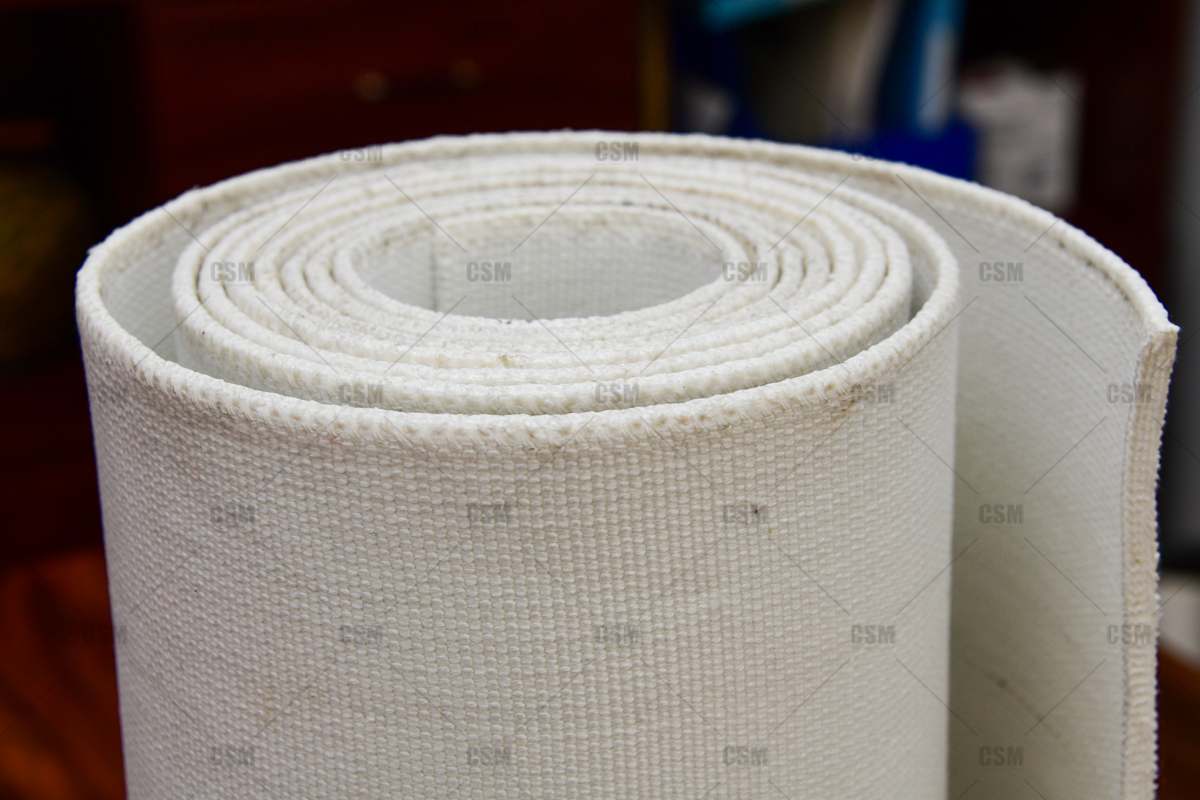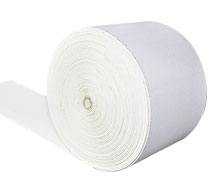
Description:
A chute consists of two upper and lower trough-shaped shells made of thin steel plates. Between the upper and lower shells, an air slide canvas is clamped, and the entire chute is arranged at a certain slope.

Materials are fed into the chute canvas at the feeding port of the upper shell through feeding equipment. Air is blown into the lower shell by a blower and permeates through the air slide canvas along the chute, fluidizing the materials. The fluidized materials then flow forward along the slope and are discharged through the discharge port.
It is evident that the air slide canvas plays a crucial role in the chute equipment. Therefore, a high-quality matching air slide canvas should have advantages such as high temperature resistance (up to 150°C), corrosion resistance, wear resistance, low hygroscopicity, light weight, flat surface, and long service life.
Proper installation steps:
Ensure strict slope accuracy for the air conveying chute, with a maximum allowable error of 1/1000 (cumulative error in the direction of increasing slope) and lateral unevenness ≤ 1/500 of the width.
Keep the canvas free of oil/water. Cut it 0.5m longer than the slope and 1.5cm wider than the shell flange. Tension longitudinally before installing the upper shell, then pull tight transversely. Stagger joints for bends/tees to ensure uniform breathability.
Ensure tight component installation to prevent air/dust leakage, using asbestos rope (or alternatives like felt pads) for sealing.
Check and adjust access doors, tees, sight glasses, and gas valves for flexibility and tight closure; reshape valve rubber gates to fit the canvas closely.
Summary: Proper installation of the air slide canvas involves maintaining slope accuracy, handling the canvas carefully (avoiding oil/water, ensuring proper tension and joint alignment), securing tight seals, and adjusting components for functionality. These steps ensure efficient, leak-free operation of the chute system.







